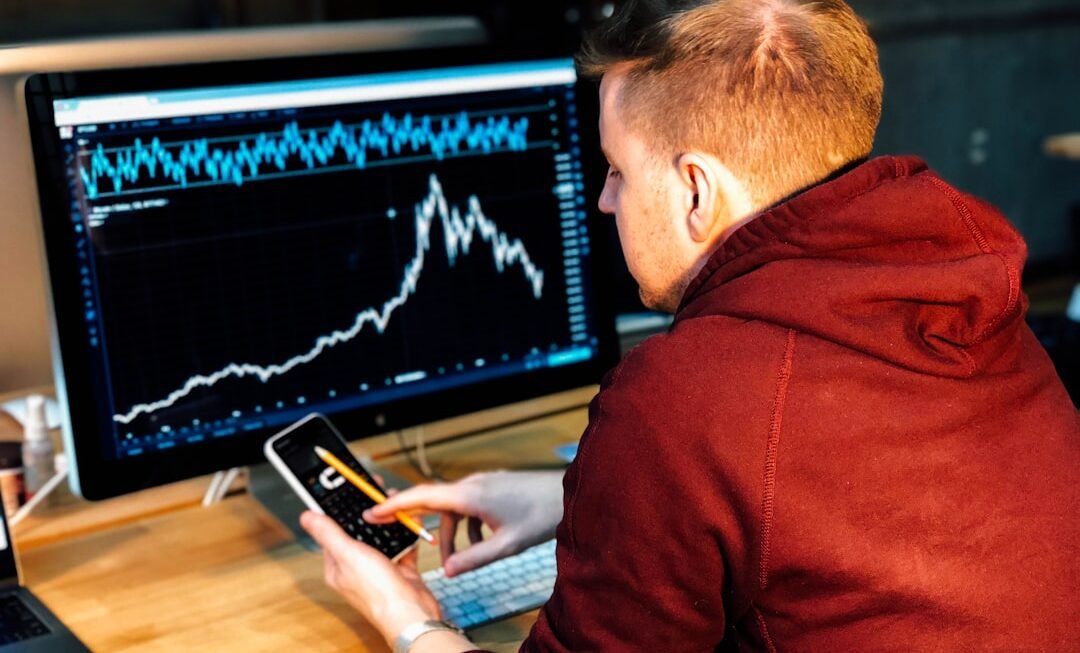The landscape of online trading has undergone a seismic shift with the advent of artificial intelligence (AI) and automation technologies. Traditionally, trading was a domain dominated by human intuition, experience, and analysis. However, the integration of AI has revolutionized this field, enabling traders to leverage vast amounts of data and sophisticated algorithms to make informed decisions at unprecedented speeds.
The automation of trading processes not only enhances efficiency but also minimizes human error, allowing for a more systematic approach to market engagement. As a result, traders can now execute complex strategies that were once deemed impractical due to time constraints or the sheer volume of data involved. AI automation in online trading encompasses a range of technologies, including machine learning, natural language processing, and advanced analytics.
These tools empower traders to analyze market trends, identify patterns, and execute trades based on real-time data. The ability to process and interpret large datasets quickly is a game-changer in a market where milliseconds can determine profitability. As we delve deeper into the various facets of AI in trading, it becomes evident that this technological evolution is not merely a trend but a fundamental transformation that is reshaping the financial landscape.
Key Takeaways
- AI automation in online trading is revolutionizing the way trades are executed, making the process faster and more efficient.
- Intelligent trading strategies are on the rise, utilizing AI algorithms to analyze market data and make informed decisions.
- Machine learning plays a crucial role in online trading by enabling systems to learn from data, adapt to market changes, and improve trading performance.
- Predictive analytics in trading have advanced significantly, allowing traders to forecast market trends and make more accurate predictions.
- AI has a significant impact on risk management in online trading, helping traders identify and mitigate potential risks more effectively.
The Rise of Intelligent Trading Strategies
Continuous Refining and Real-Time Adjustments
By employing AI, traders can refine these models continuously, allowing for real-time adjustments that enhance their effectiveness. Moreover, intelligent trading strategies often incorporate sentiment analysis, which evaluates market sentiment through social media, news articles, and other public data sources. This approach enables traders to gauge public perception and its potential impact on stock prices.
Predicting Market Reactions with Sentiment Analysis
For example, during significant events such as earnings reports or geopolitical developments, AI can analyze the sentiment surrounding these events and predict market reactions more accurately than traditional methods. This multifaceted approach to strategy development not only increases the likelihood of successful trades but also provides traders with a competitive edge in an increasingly crowded marketplace.
The Role of Machine Learning in Online Trading
Machine learning (ML), a subset of AI, plays a pivotal role in enhancing the capabilities of online trading platforms. By utilizing algorithms that can learn from data without being explicitly programmed, machine learning enables traders to uncover hidden patterns and correlations within vast datasets. For instance, ML algorithms can analyze historical price movements alongside various economic indicators to identify trends that may not be immediately apparent to human analysts.
This capability allows traders to make more informed decisions based on predictive insights rather than relying solely on intuition or traditional analysis. One notable application of machine learning in trading is the development of predictive models that forecast asset prices. These models can incorporate a wide range of variables, including macroeconomic indicators, technical indicators, and even social media sentiment.
By training on historical data, these models can improve their accuracy over time, adapting to new information as it becomes available. For example, hedge funds and institutional investors are increasingly employing ML-driven models to manage their portfolios, leading to more dynamic and responsive trading strategies that can capitalize on fleeting market opportunities.
Advancements in Predictive Analytics for Trading
Predictive analytics has become an essential tool in the arsenal of modern traders, enabling them to anticipate market movements with greater precision. The advancements in this field are largely driven by the integration of AI technologies that enhance data analysis capabilities. Predictive analytics involves using statistical algorithms and machine learning techniques to analyze historical data and predict future outcomes.
In the context of trading, this means identifying potential price movements or market trends before they occur. One significant advancement in predictive analytics is the use of deep learning techniques, which involve neural networks capable of processing complex datasets with multiple layers of abstraction. These deep learning models can analyze not only numerical data but also unstructured data such as news articles and social media posts.
For instance, a deep learning model might analyze thousands of tweets related to a particular stock to gauge public sentiment and predict its price movement. This level of analysis allows traders to make decisions based on a comprehensive understanding of market dynamics rather than relying solely on traditional financial metrics.
The Impact of AI on Risk Management in Online Trading
AI’s influence extends beyond trade execution and strategy development; it also plays a crucial role in risk management within online trading environments. Effective risk management is essential for preserving capital and ensuring long-term profitability. AI-driven tools can analyze vast amounts of data to identify potential risks associated with specific trades or investment strategies.
By assessing historical performance and market conditions, these tools can provide insights into the likelihood of adverse outcomes. For example, AI algorithms can evaluate the volatility of assets and assess how external factors—such as economic indicators or geopolitical events—might impact their performance. This capability allows traders to implement more robust risk mitigation strategies tailored to their specific portfolios.
Additionally, AI can facilitate real-time monitoring of positions, alerting traders to potential risks as they arise. This proactive approach to risk management not only enhances decision-making but also fosters a more resilient trading environment.
The Future of Algorithmic Trading
Autonomous Trading Systems
As technology becomes more sophisticated, algorithmic trading systems will likely become increasingly autonomous, capable of executing complex strategies without human intervention. This shift could lead to a new era where algorithms not only identify trading opportunities but also adapt their strategies based on real-time market conditions.
Blockchain and Smart Contracts
The integration of AI with blockchain technology could revolutionize algorithmic trading by enhancing transparency and security in transactions. Smart contracts could automate trade execution based on predefined conditions, reducing the need for intermediaries and streamlining processes. As these technologies converge, traders may find themselves operating in an environment characterized by greater efficiency and reduced costs.
High-Frequency Trading and Competition
Additionally, the proliferation of high-frequency trading strategies will likely continue as firms seek to capitalize on minute price discrepancies across markets. With AI’s ability to process information at lightning speed, HFT firms will be able to execute thousands of trades per second, further intensifying competition in the trading arena. As a result, traders will need to continuously innovate and adapt their strategies to remain competitive in this rapidly evolving landscape.
Ethical Considerations and Regulation in AI-powered Trading
As AI becomes increasingly integrated into online trading practices, ethical considerations and regulatory frameworks must evolve accordingly. The use of AI raises questions about fairness, transparency, and accountability in trading practices. For instance, algorithmic trading systems can inadvertently contribute to market manipulation or exacerbate volatility if not properly regulated.
The rapid execution capabilities of AI-driven algorithms may lead to flash crashes or other unintended consequences that can harm investors and undermine market integrity. Regulators are beginning to recognize the need for oversight in this area. Initiatives aimed at establishing guidelines for algorithmic trading practices are gaining traction globally.
Regulatory bodies are exploring measures such as requiring firms to disclose their algorithms’ decision-making processes and ensuring that they adhere to ethical standards. Additionally, there is an ongoing dialogue about the potential need for “kill switches” that allow traders or regulators to halt automated trading activities during periods of extreme volatility. Furthermore, ethical considerations extend beyond regulatory compliance; they also encompass the responsibility of firms to ensure that their AI systems are designed with fairness and inclusivity in mind.
As biases inherent in training data can lead to discriminatory outcomes in trading decisions, it is crucial for developers to implement measures that mitigate these risks.
The Integration of AI and Human Traders in the Future of Online Trading
The future of online trading will likely see a harmonious integration between AI technologies and human traders rather than a complete replacement of one by the other. While AI excels at processing vast amounts of data and executing trades at high speeds, human traders bring invaluable qualities such as intuition, creativity, and emotional intelligence to the table. This synergy can lead to more effective decision-making processes that leverage the strengths of both parties.
For instance, human traders can provide context and qualitative insights that AI may overlook when analyzing data patterns. They can interpret geopolitical events or shifts in consumer behavior that might influence market dynamics beyond what historical data suggests. Conversely, AI can assist human traders by providing real-time analytics and predictive insights that enhance their decision-making capabilities.
As technology continues to advance, training programs will likely evolve to equip human traders with the skills necessary to work alongside AI systems effectively. This collaboration could foster a new generation of traders who are adept at leveraging technology while maintaining a critical understanding of market fundamentals. Ultimately, the integration of AI and human expertise has the potential to create a more resilient and adaptive trading environment that benefits all participants in the financial markets.












